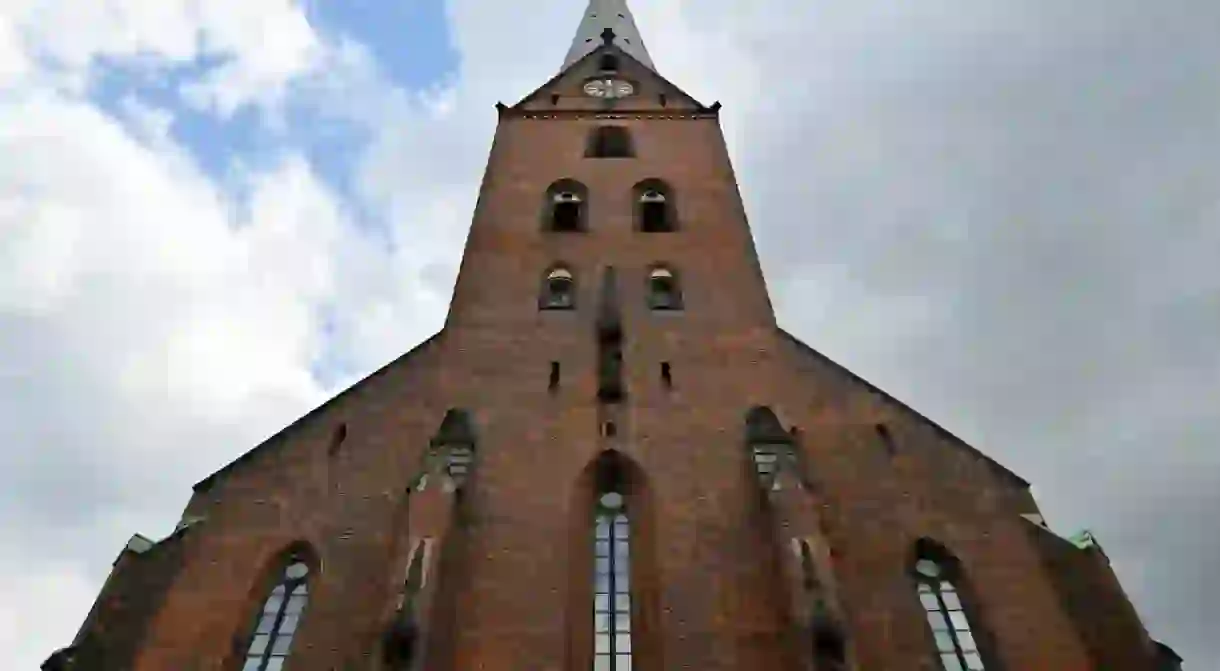Top 8 Churches in Hamburg, Germany

From churches to temples, synagogues, and mosques, the harbour city of Hamburg is home to more than 300 houses of worship. Visit these eight beautiful churches near the centre of the city to learn about its history and have a glimpse of its religious diversity.
St. Petri

The stately St. Petri church, dedicated to the apostle Peter, is Hamburg’s oldest church and the main of the five principle churches that define the city’s skyline. Located next to the City Hall, it was first mentioned in records in 1195 as a market cathedral. Remodelled during the 14th century in the Gothic style, the church was severely damaged by the Great Fire of 1842 but rebuilt in its former image soon thereafter. Fortunately, its precious artwork was saved and the visitors of St. Petri can admire some the oldest works of art in the city. Today St. Petri is known for church music, in particular its Bach choir.
St. Michaelis

The grand St. Michaelis church is Hamburg’s largest church and one of the most famous landmarks of the city. Its defining feature is the 132 m (144 yards) tall copper spire that once guided ships on the river Elbe beneath. The current building is the third church on these grounds, the first having been struck by lightning in 1750, and the second destroyed by fire in 1906. An impressive bronze statue of the church’s patron saint, the archangel Michael, decorates the entrance portal. Inside, the visitors can admire the vast church and its four organs, visit the crypt, and ascend the tower for panoramic views of the city.
St. Jacobi
Also, the St. Jacobi Church, built in the 14th century, belongs among Hamburg’s Evangelic Lutheran principal churches. Having suffered considerable damages during air raids of World War II, the church was rebuilt in 1963. While its main construction remains medieval in style, the new spire is completely modern. The biggest treasures of the St. Jacobi Church are its Arp Schnitger organ, the largest preserved baroque organ in northern Europe, its three medieval altars, and its modern stained glass windows.
St. Katharinen
Near the Speicherstadt warehouse district lies the St. Katharinen Church, the city’s third oldest principal church. Built in the 13th century, it was once a church for merchants, ship builders, and seamen. The base of the church spire, also dating back to this time, is the oldest stonework in Hamburg. Expanded and restored over the centuries, the church presents a beautiful example of north German Brick Gothic, adorned by a copper-plated Baroque tower that bears the figure of the church’s patron saint – St. Catherine.
St. Nikolai
Also the principle church of St. Nikolai has a chequered history. The first church, a 14th-century Gothic basilica, was destroyed by the Great Fire of Hamburg in 1842. The new Gothic Revival church completed in 1874 was the world’s tallest building, if only for two short years. It was severely damaged by bombings during World War II, leaving only the magnificent tower largely intact. Today the church serves as a memorial site for remembering victims of war and tyranny. The church spire is still one of the tallest structures in the city, offering beautiful sights from its viewing platform.
St. Marien
Building, Cathedral, Church, Park

Gnadenkirche
One of the most beautiful churches in the city is the Russian Orthodox Gnadenkirche, ‘church of mercy’, in the Karolinenviertel. The round church was built in 1907 and for almost a century served as an Evangelic Lutheran house of God. As the number of churchgoers dwindled, in 2004 the church was taken over by the parish of Saint John of Kronstadt. After extensive renovations to suit its new congregation, the church now boasts gorgeous frescoes and exquisite iconostasis created by Moscow’s best icon painters.
Flussschifferkirche
Likely the most unique place of worship in Hamburg is the Flussschifferkirche – the only swimming church in Germany. Since 1952, the church invites Protestant congregants to attend services, weddings, and baptisms on the waters of the Hamburg port. Built in 1906, the blue swimming church is 26 meters long and has enough place for 130 people. The lovingly nicknamed “Flusi” is a continuation of a centuries-long Hamburg tradition of seamen’s pastors and the first church services on water date back to the mid-18th century.













